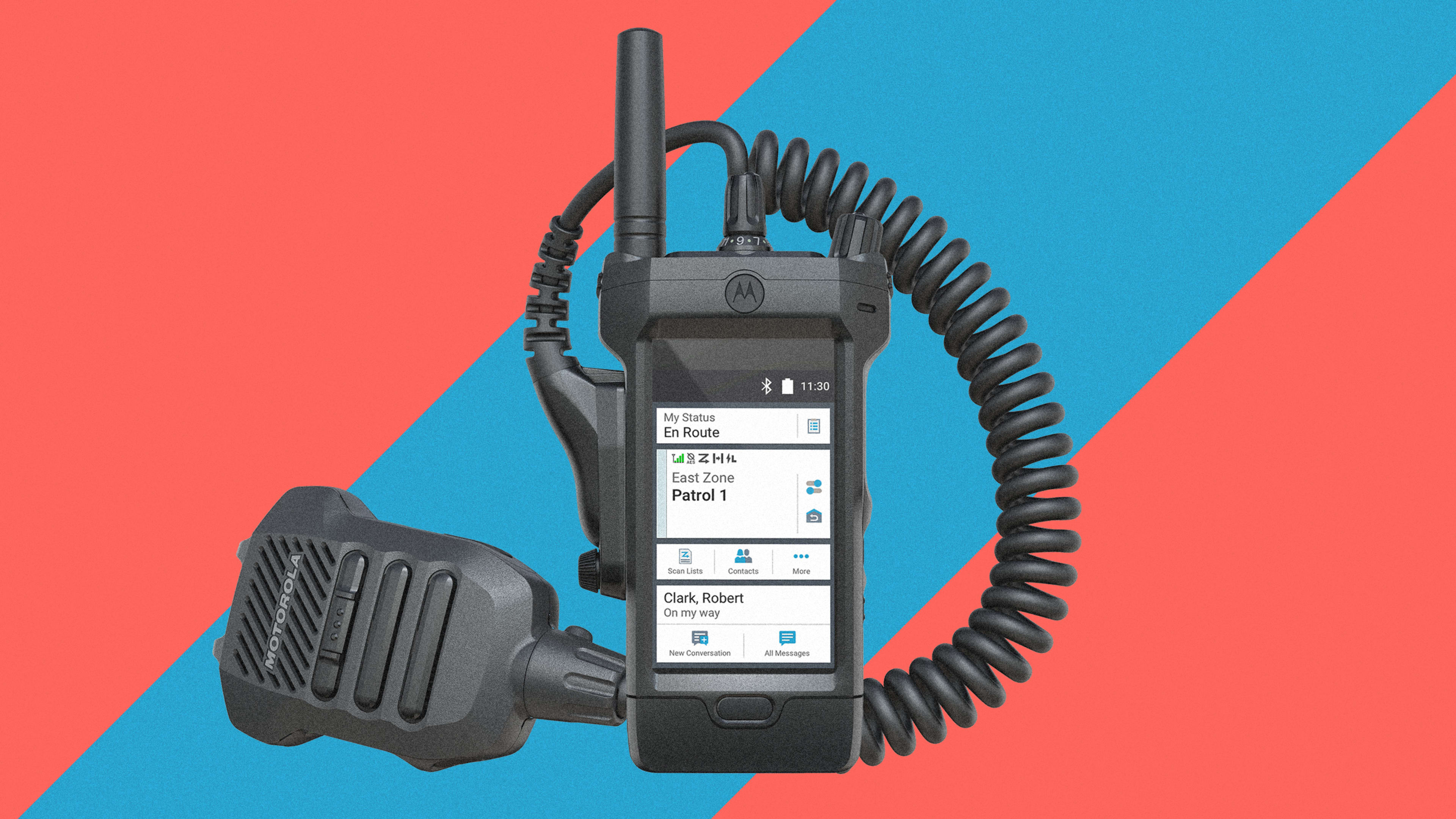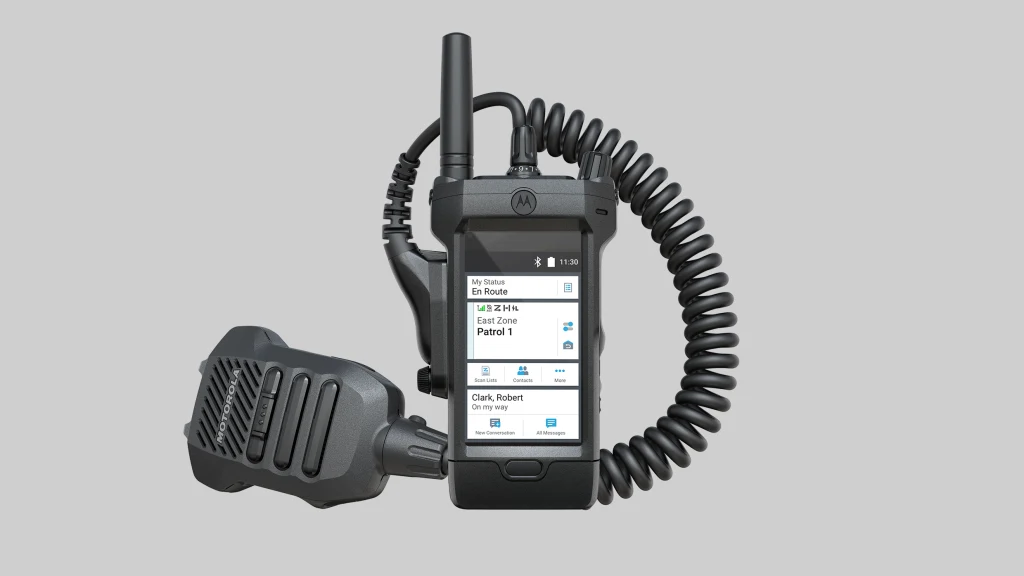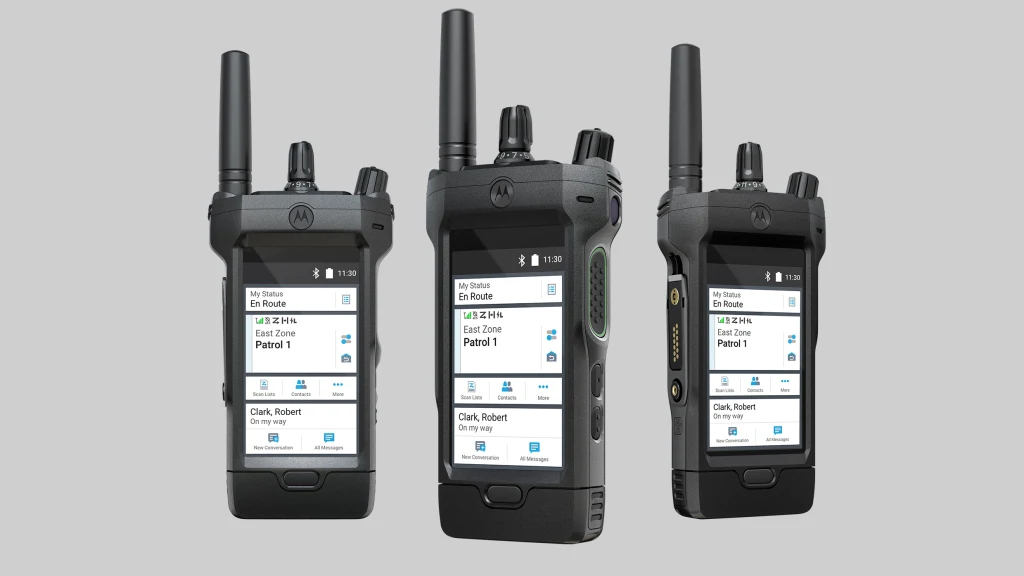Smartphones are handy devices, but they don’t do much good in emergencies. If a hurricane knocks down a few cell towers, or forest fires tear through the already thin infrastructure of remote areas, cell-phone communication can simply disappear. Which is why, to this day, first responders like police officers and firefighters rely on LMR, or “land mobile radios” (aka walkie-talkies). Walkie-talkies have a range of a few miles and are used to coordinate everything from routine information requests to dispatch to deep-disaster response inside a crumbling building.
Now, Motorola Solutions (not to be confused with Motorola Mobility, which makes the smartphones you know), the biggest global player in these LMR walkies, is releasing what appears to be the most advanced walkie-talkie ever. Called the APX Next, it’s a chunky black brick with a thick antenna and a giant push-to-talk button on its side. Much like an iPhone, it also features a touchscreen on its front—but don’t be distracted by that. Its real innovation was born from 2,000 hours of interviews and testing with more than 50 emergency service agencies, including SWAT teams and detectives. It’s a voice-recognition system that can operate in extremely loud environments, with artificial intelligence software that can look up 95 of the most common things a police officer or firefighter would call into dispatch—like a driver’s license, or license plate—without any human operator on the other end of the line. But its ultimate promise is simply to free up the user’s hands as much as possible, ensuring that someone is as safe and capable as possible during an emergency.
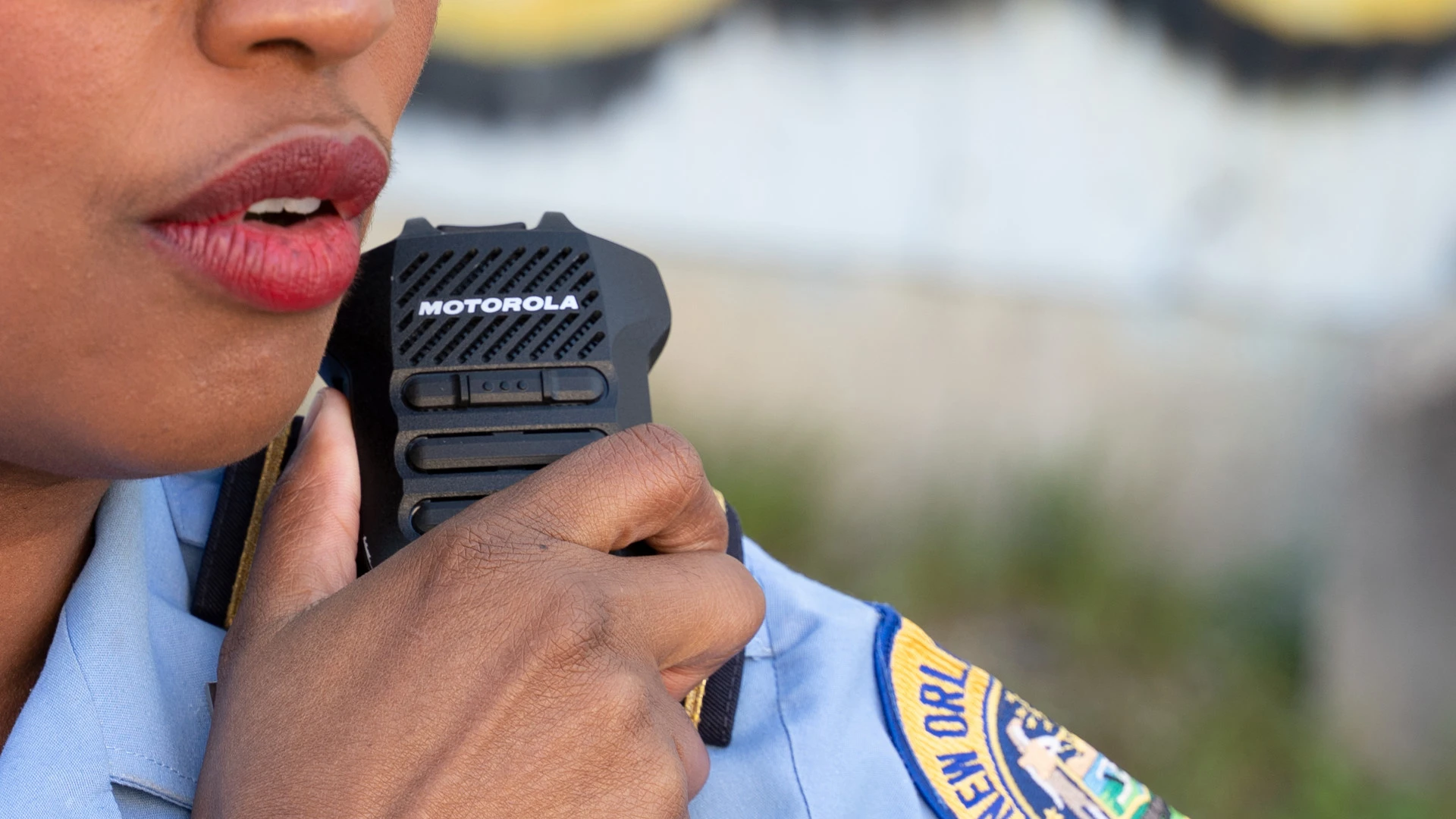
“It’s a fairly obvious product,” laughs Motorola Solutions SVP of Technology Paul Steinberg, who readily notes that voice recognition and AI is all stuff we’ve heard before from companies like Amazon and Google. But as his colleague Jack Molloy, EVP of products and sales, puts it so bluntly: “If you’re standing in a high [danger] environment with an Amazon Echo, you’re not going to have the same performance as our product.”
Indeed, the APX Next is a notable device because it encapsulates modern technological trends but applies them to a highly specialized environment where they otherwise wouldn’t make sense at all. This approach to design is what Motorola dubs “high-velocity human factors.”
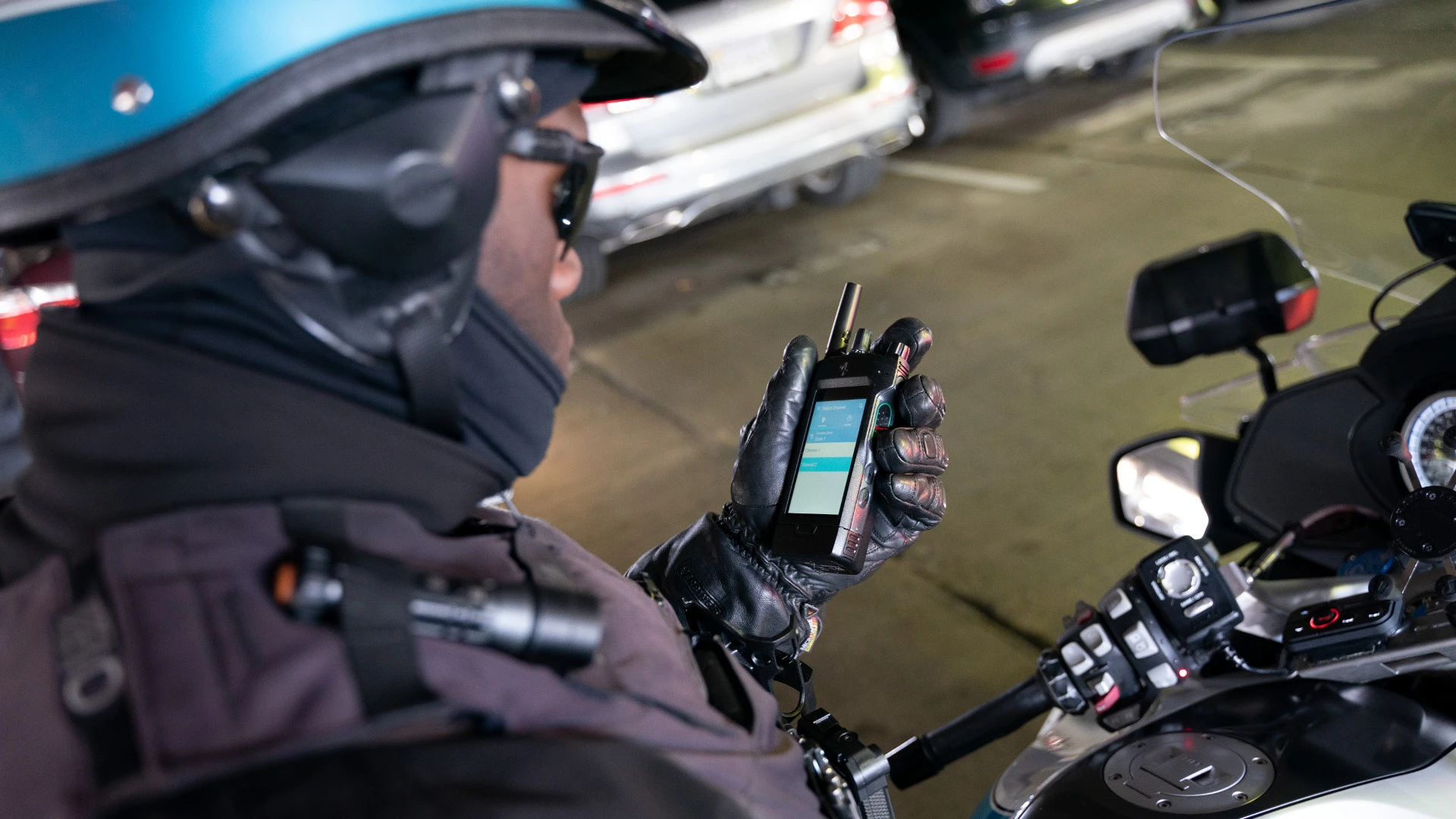
“It means the more a user is stressed, if a police officer has deployed her weapon, she can’t focus on anything but the stress,” explains Steinberg. “The paradox for us is . . . when people most need the technology, they have the ability to.”
APX Next is a walkie-talkie and a cellphone combined. It has both the high-powered radio chip for land communications and a low-powered 4G/LTE chip for cell-tower data. These two chips can work at the same time, which is an engineering challenge, especially because the walkie-radio has 25 times the wattage of the 4G chip. “The trick was allowing them to operate concurrently, because they are close to one another in spectrum [and that can cause interference],” says Steinberg.
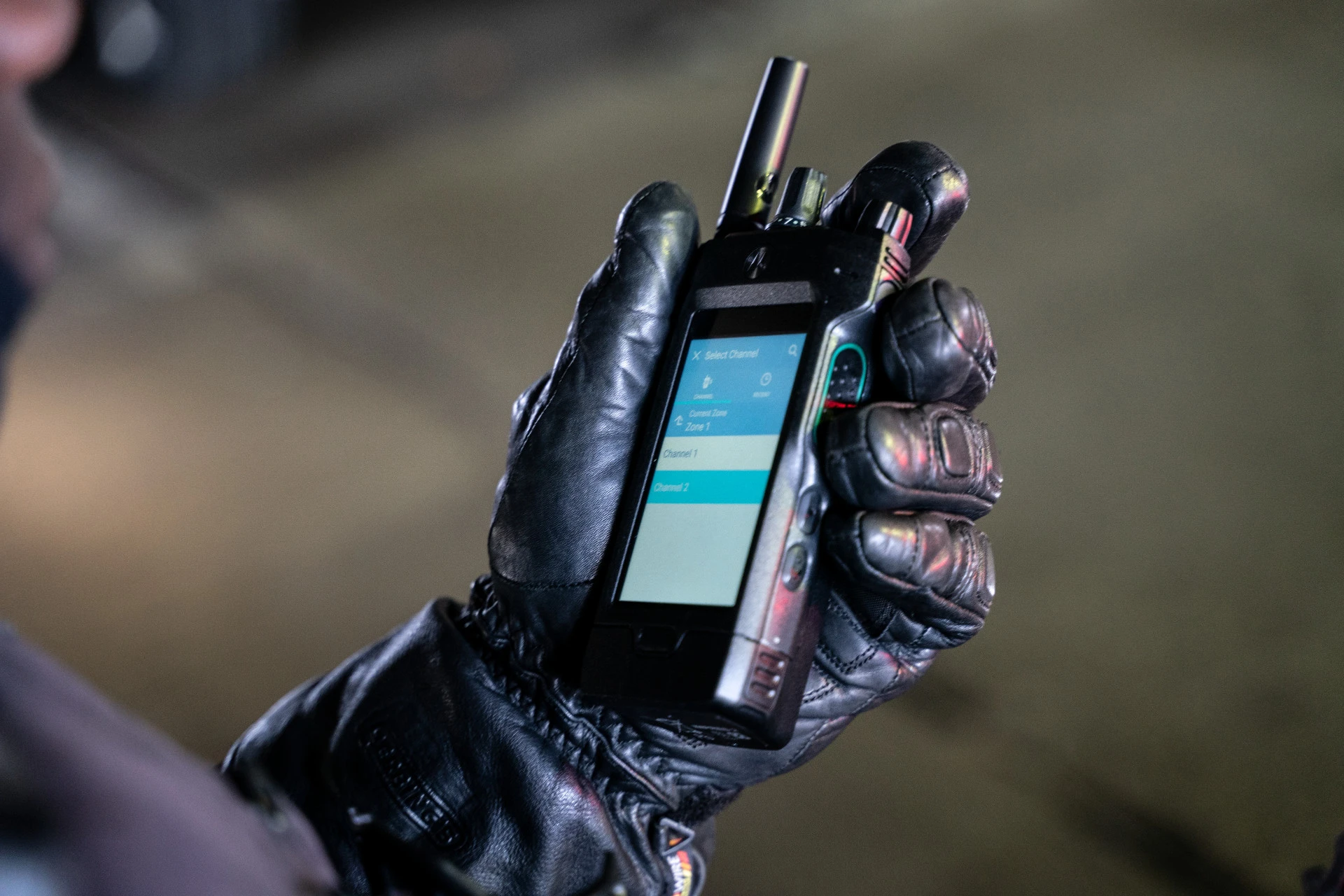
The core buttons, including the large talk button, are all designed as you’d expect, to ensure they can be used without looking, and purely by muscle memory in stressful situations. Four separate microphones capture your voice, with programming designed specifically to cancel out exceptionally loud noises. But it isn’t always listening for a wake word like the Echo or Google Home. You need to hit a button to cue the assistant.
“If you think about it, you wouldn’t want someone yelling down the street to activate something on the radio,” says Steinberg. Perhaps one day, biometric security will recognize a police officer’s voice well enough to allow complete hands-free use, but that day isn’t today.
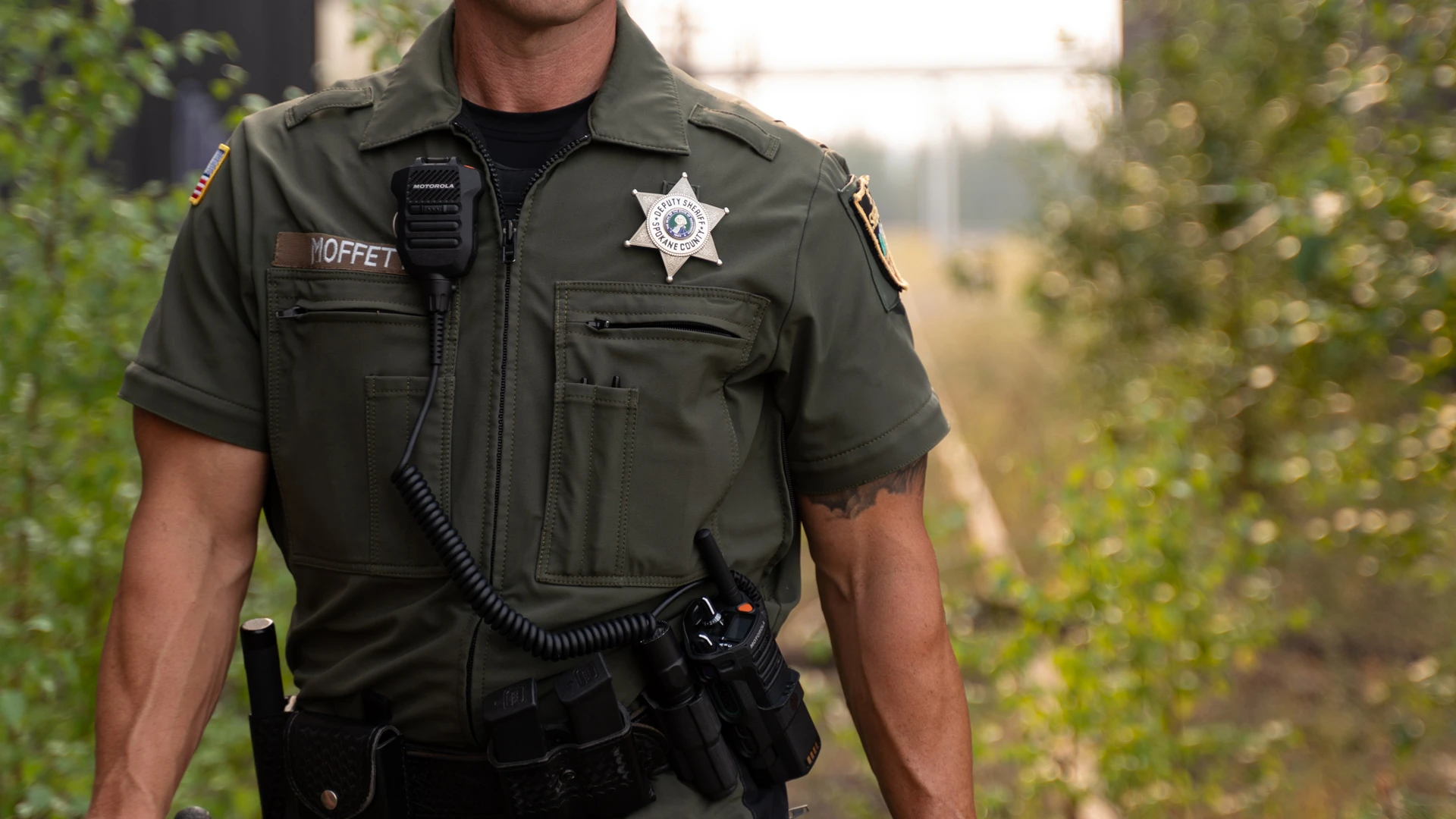
Officers speak as they would normally would to call dispatch, because as Motorola learned in ride alongs and other studies, emergency personnel communicate in highly standardized ways. You’ve surely heard the “ten-codes”used by police officers in the past. It’s a specific dialect that can point to various situations or crimes.
While Motorola bought its own language processing startup years ago, even before the Echo had been released, the company tells us that it’s using unnamed third parties to handle the natural language processing in the cloud. What Motorola did was train the model specifically to handle things like ten-codes and even regionally specific dialects across the U.S. That’s high-stakes work, too. Ten-codes are not uniform across the country. In one area, 10-1 means “communication error,” whereas in another, it can mean “officer down.”
Once a question is sent to the cloud, the AI is able to scour a city or force’s database for the same private information a dispatcher would be looking up. (How? Because Motorola makes a lot of these agency computer systems, too—including the radio communication and camera surveillance infrastructure behind dozens of U.S. states and the cities of Chicago, Los Angeles, and New York.)
But one key point of conversational ergonomics is that the AI won’t just read the results of this potentially sensitive information out loud. The radio beeps when it has an answer, and the user can get to a private place, if they wish, before hitting a button to hear the results. In the future, Motorola tells me that the APX Next screen could display this data discreetly, too.
Motorola will not talk about pricing of the product—which includes the purchase price of the radios and ongoing subscription plans to provide the 4G and voice capability services—because that pricing varies so largely by scale. The company believes voice assistant radios are a $10 billion industry, however. And I asked if the appeal of APX Next to some organizations would ultimately be cost cutting, giving them the option to remove dispatch jobs with the availability of AI agents.
Related: Body camera maker will let cops live-stream their encounters
“I don’t think we’re going to get to a place where AI or a big-data mechanism will ever be able to replace what they do,” says Molloy. “What we’re trying to do is give them [an alternative to] looking up a random car at 3 p.m. in the afternoon. We need to make sure they can respond to the hottest of hot issues.” In other words, by freeing dispatchers of their more routine tasks, they hope to decrease the waits on 911 calls and other true emergency services, a possibility that holds some real promise. Steinberg also adds that the most sensitive data queries can be flagged to a human dispatcher, assuring, “Our AI will never ever take a consequential action without a human being validating what’s coming in.”
The APX Next is available for order now. For all of our well-being, here’s hoping it works.
Recognize your company's culture of innovation by applying to this year's Best Workplaces for Innovators Awards before the extended deadline, April 12.
